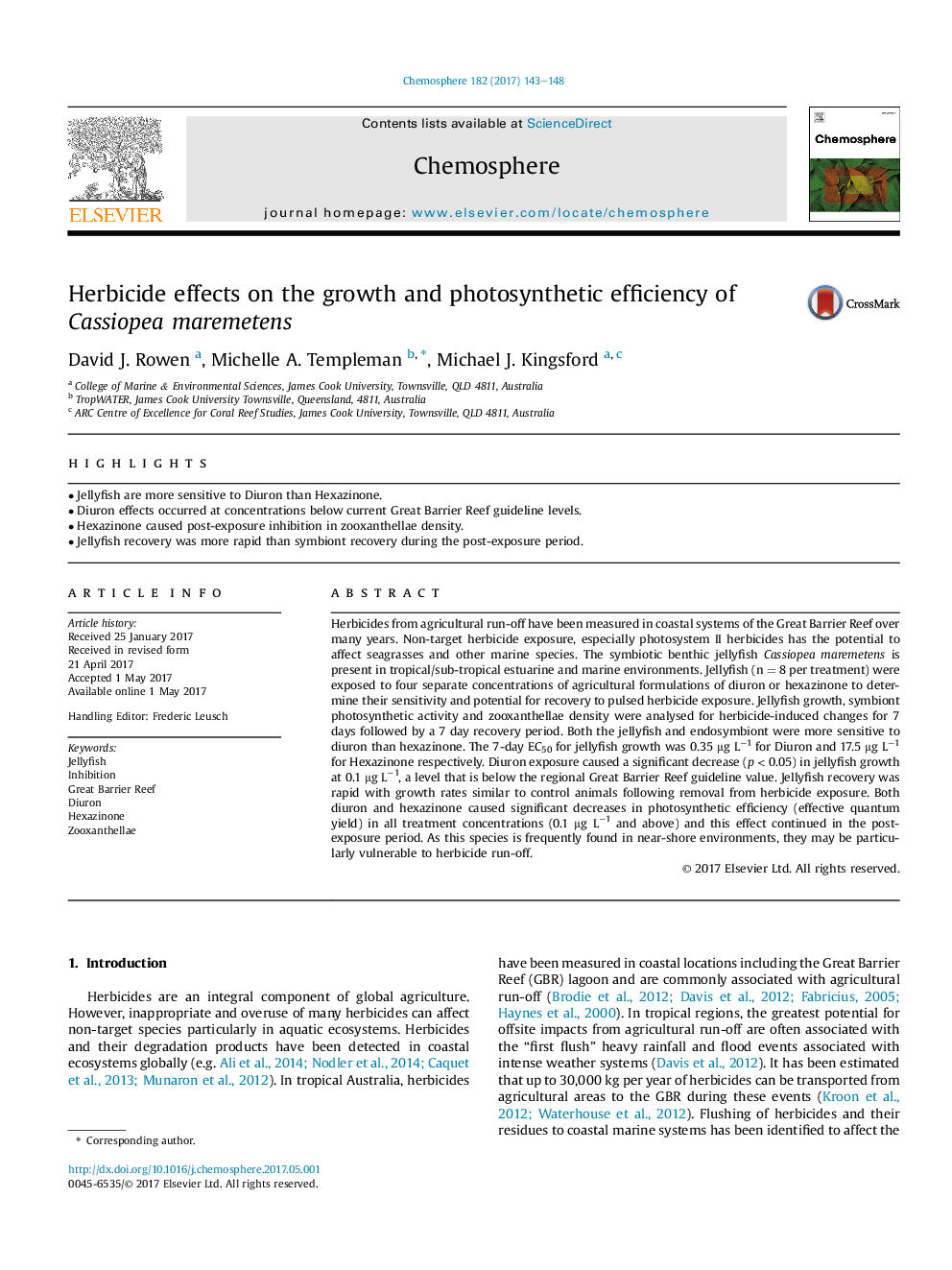| کد مقاله | کد نشریه | سال انتشار | مقاله انگلیسی | نسخه تمام متن |
|---|---|---|---|---|
| 5746905 | 1618789 | 2017 | 6 صفحه PDF | دانلود رایگان |
- Jellyfish are more sensitive to Diuron than Hexazinone.
- Diuron effects occurred at concentrations below current Great Barrier Reef guideline levels.
- Hexazinone caused post-exposure inhibition in zooxanthellae density.
- Jellyfish recovery was more rapid than symbiont recovery during the post-exposure period.
Herbicides from agricultural run-off have been measured in coastal systems of the Great Barrier Reef over many years. Non-target herbicide exposure, especially photosystem II herbicides has the potential to affect seagrasses and other marine species. The symbiotic benthic jellyfish Cassiopea maremetens is present in tropical/sub-tropical estuarine and marine environments. Jellyfish (n = 8 per treatment) were exposed to four separate concentrations of agricultural formulations of diuron or hexazinone to determine their sensitivity and potential for recovery to pulsed herbicide exposure. Jellyfish growth, symbiont photosynthetic activity and zooxanthellae density were analysed for herbicide-induced changes for 7 days followed by a 7 day recovery period. Both the jellyfish and endosymbiont were more sensitive to diuron than hexazinone. The 7-day EC50 for jellyfish growth was 0.35 μg Lâ1 for Diuron and 17.5 μg Lâ1 for Hexazinone respectively. Diuron exposure caused a significant decrease (p < 0.05) in jellyfish growth at 0.1 μg Lâ1, a level that is below the regional Great Barrier Reef guideline value. Jellyfish recovery was rapid with growth rates similar to control animals following removal from herbicide exposure. Both diuron and hexazinone caused significant decreases in photosynthetic efficiency (effective quantum yield) in all treatment concentrations (0.1 μg Lâ1 and above) and this effect continued in the post-exposure period. As this species is frequently found in near-shore environments, they may be particularly vulnerable to herbicide run-off.
Journal: Chemosphere - Volume 182, September 2017, Pages 143-148
